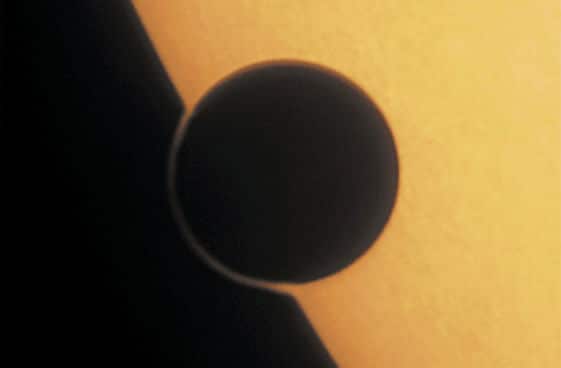Reminder on June 6, 2012 we will be able to observe the transit of the planet Nega (Venus) over the Sun for the last time. Many bodies in Israel will organize observations for the general public and screening of the transition on the Internet.

Yair Hakavi | Galileo
For website surfers - please add messages about planned observations in the comments to this page.
Those who get up on the morning of June 6, 2012 will be among the last people alive today to see the transit of the planet Nega (Venus) over the surface of the Sun. Venus, a planet that is in an inner orbit to the orbit of the Earth around the Sun, is seen to pass the Sun in cycles of 8, 121.5, 8 and 105.5 years (this is because the event is only possible when the Sun, Venus and the Earth are aligned on the same line).
The last transit was observed in 2004, and the next transit will only be in 2117. Despite the conspiracy theories about the end of the world, the transit of Nega is not expected to bring with it catastrophic scenarios. In fact, due to the size of the planet compared to the size of the Sun, Venus will only block about a thousandth of the Sun's light, and the transit will have almost no noticeable consequences on Earth.
Previous transits of Venus across the Sun allowed astronomers to measure the distance between the Earth and the Sun, and with the help of Kepler's third law to deduce the size of the entire solar system. Let's recall that Kepler's third law states that the ratio between the square of a planet's orbital period and the third power of its distance from the Sun is the same for all planets. Knowing all the cycle times, therefore, a measurement of the distance of one of the planets from the sun is needed to determine the distance of all the others.
The way the passage of Venus across the Sun is seen depends on the observer's position on Earth. By precisely timing the entry and exit of Venus from the transit, as seen by two distant observers, the angle between the lines of sight can be deduced. From this angle, and knowing the distance between the observers, it is possible to calculate the distance between the Earth and Venus. With Kepler's third law, the distance between the Earth and the Sun can be deduced.
A rare celestial phenomenon
Today, transits of planets across other suns are among the most successful methods for discovering planets outside the solar system (extrasolar planets). Although a planet in such a transit covers only a small part of its sun, modern telescopes are able to measure the slight decrease in the brightness of that distant sun, caused during the transit, thus inferring the existence of the planet, measuring its orbital period and also calculating its size and mass.
The current transit of Venus in front of our Sun gives astronomers a rare opportunity to test and calibrate the methods used to discover planets around other suns. The Hubble Space Telescope, for example, will try to measure the components of the atmosphere of the Moon during the transit, and compare them to measurements made by spacecraft orbiting the Moon itself. The hope is that the calibration of these methods will pave the way for measuring the atmospheric components of the holiday planets around other suns, and thus check if they have signs of the possibility of life.
But even for those who are not astronomers, the transit of Venus is an opportunity to enjoy watching a rare celestial phenomenon (one of the rarest phenomena possible to predict). In most parts of North America the transit will be seen over the setting sun on the evening of June 5th, while in Israel (and parts of Asia and Africa) the transit will be seen over the rising sun at 5:34 am on June 6th, and will end at 7:55 am. Many bodies in Israel, including the Weizmann Institute, will organize observations for the general public using special equipment and screening the transition live on the Internet.
To watch the transition, it is important to have appropriate eye protection equipment! It must be remembered that looking directly at the sun (even during the transit of Venus) is very dangerous and may lead to blindness. Under no circumstances should you look directly at the sun.
for further reading:
HERE
And here
The full article was published in Galileo magazine, May 2012

One response
We will get to see him in the next round as well.